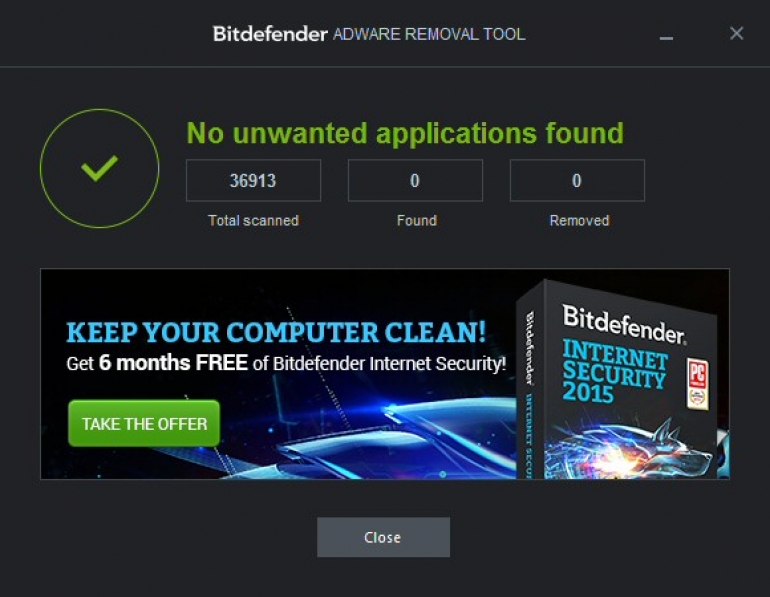

- #Bitdefender adware removal update#
- #Bitdefender adware removal manual#
- #Bitdefender adware removal archive#
If one is archiving files by directly copying them to a backup drive or flash-stick, then again, the backups should be clean of malware if the original source folders were clean - except in that case where malware independently infects the drive on which the archive is stored. But it can independently infect the drive on which the archive is stored, as noted below. The malware can't normally infect such an existing archive after it's created. If one is archiving files using an imaging program like TrueImage, Paragon, or similar to create an archive backup file of a drive or a folder of files, malware will only ever appear within that archive if it was already present on the system at the time the archive was created. However, malware is usually not able to directly and effectively alter the contents of existing complex files without causing corruption that renders the infected file unusable - thus the risk of infection in that manner is considered minimal. In some cases, some legitimate files can even be replaced by similarly-named malicious file versions.

In general and unless otherwise blocked, malware can insert its own payload files among the various legitimate files collected on drives or within folders - though which drives or folders are more easily accessible for infection is greatly affected by the access compartmenting that occurs when employing the OS's limited user accounts or group-policies for files and folders. There are a number of factors influencing what malware can and cannot do on a computer. Yes, is the actual BitDefender site and a safe place to download from. Sometimes this has to do with one tool activating an adware file to remove it, but the other tool seeing that and trying to grab control to kill it at the same time - most software doesn't tolerate that kind of competitive behavior very well. This is not uncommon for many (but not all) anti-malware/adware tools - they tend to not like each other very much if running at the same time. There can also be conflicts with other anti-adware tools if they are active/running at the same time as a BitDefender scan. BitDefender recommends when doing a scan that the user take their system offline, shut off any resident AV, perform their BitDefender Adware Removal Tool scan and removals (if any), then shut it off, reactivate the resident AV, and finally put the system back on line. However, some BD ART users have apparently run into conflict issues with certain AV's, Sophos in particular.
#Bitdefender adware removal manual#
The product generally is set up to use in a manual scanning manner.
#Bitdefender adware removal update#
It doesn't really update periodically, so that kind of data loading won't be a problem for a user with a data cap. Their anti-adware product is around 45 Mbytes in size and can be used as-is without an OS installation. I ran down the wrong rabbit-hole after that. I apologize for my confusing the BitDefender AV product's size with the anti-adware product you referenced a few posts up.


 0 kommentar(er)
0 kommentar(er)
